Wastewater insights from this winter's virus surge: Three takeaways from the data
Verily’s Sightline program monitors the spread of pathogens in wastewater to help communities prepare for and prevent the spread of infectious diseases.
In a feature story appearing on NBC Bay Area, data from San Francisco and San Jose wastewater plants reveal that influenza A is declining, but influenza B is now increasing, highlighting the power of real-time public health insights. According to Verily’s Dr. Amy Lockwood, the innovation of wastewater monitoring allows us to track pathogens efficiently, moving beyond traditional methods that rely on individual doctor visits.
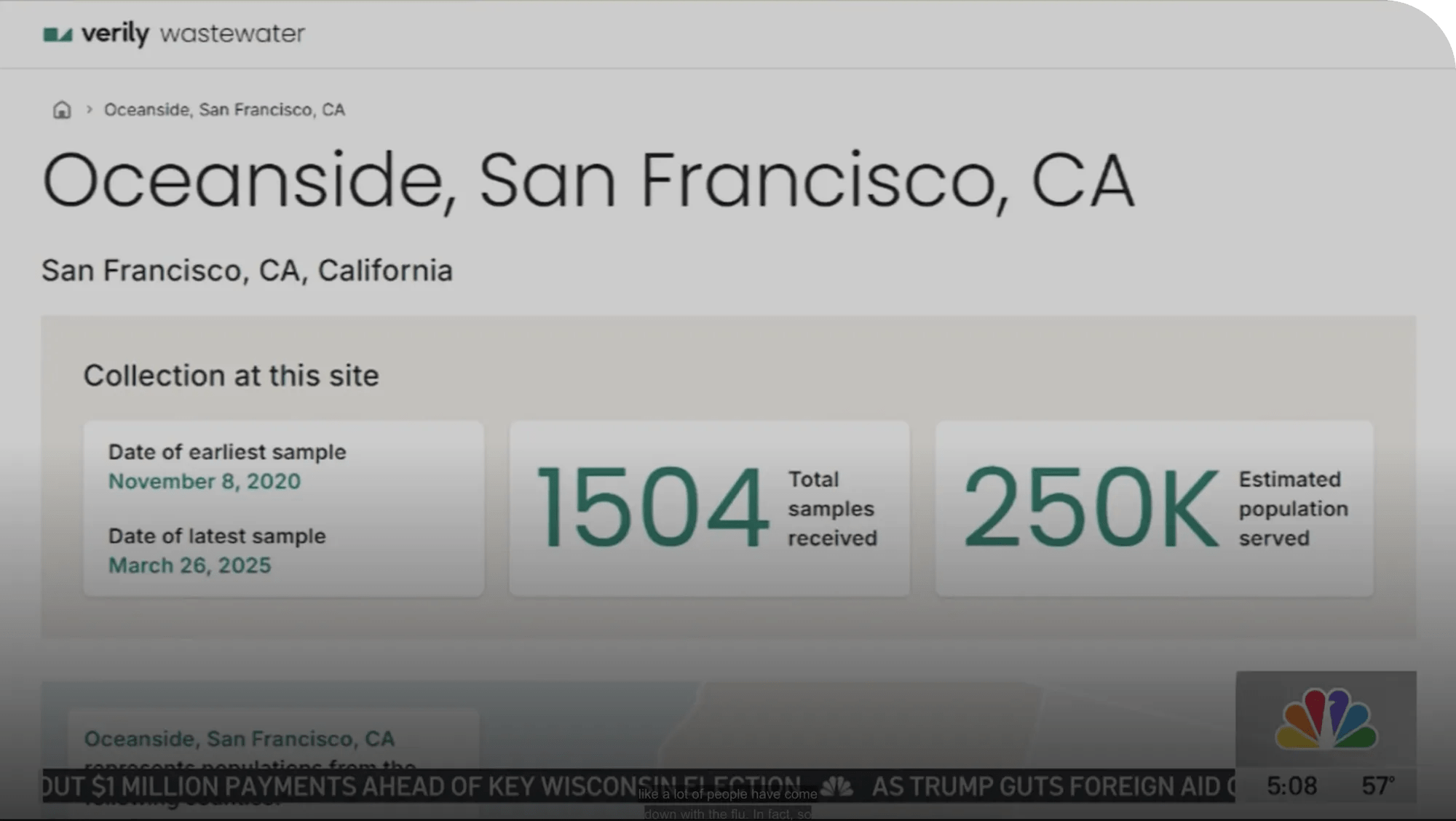
1. Respiratory viruses are on the decline, but the season isn’t over
As we celebrate the beginning of spring, respiratory viruses are finally declining after a long winter. This year, we’ve seen historically high levels of RSV and influenza A virus in wastewater (Image 1) and more mild levels of SARS-CoV-2 than in past winter seasons (Image 2). While we have seen a decline in influenza-like illnesses over the several weeks across the country (Image 3), there are still a high number of outpatient visits to healthcare providers for influenza-like illnesses in states like Maine, Michigan, New York, and Oregon. This may be driven by the increase in levels of influenza B virus in wastewater since the beginning of the year (Image 4).
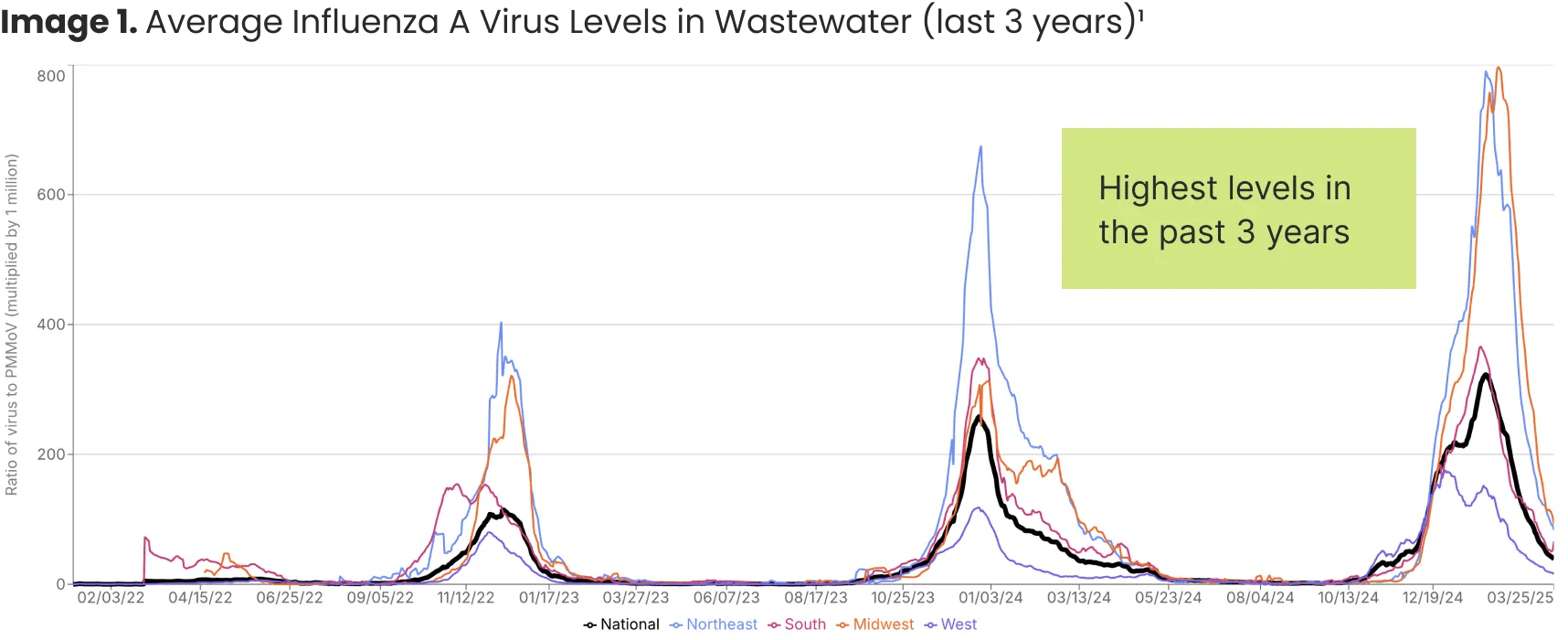
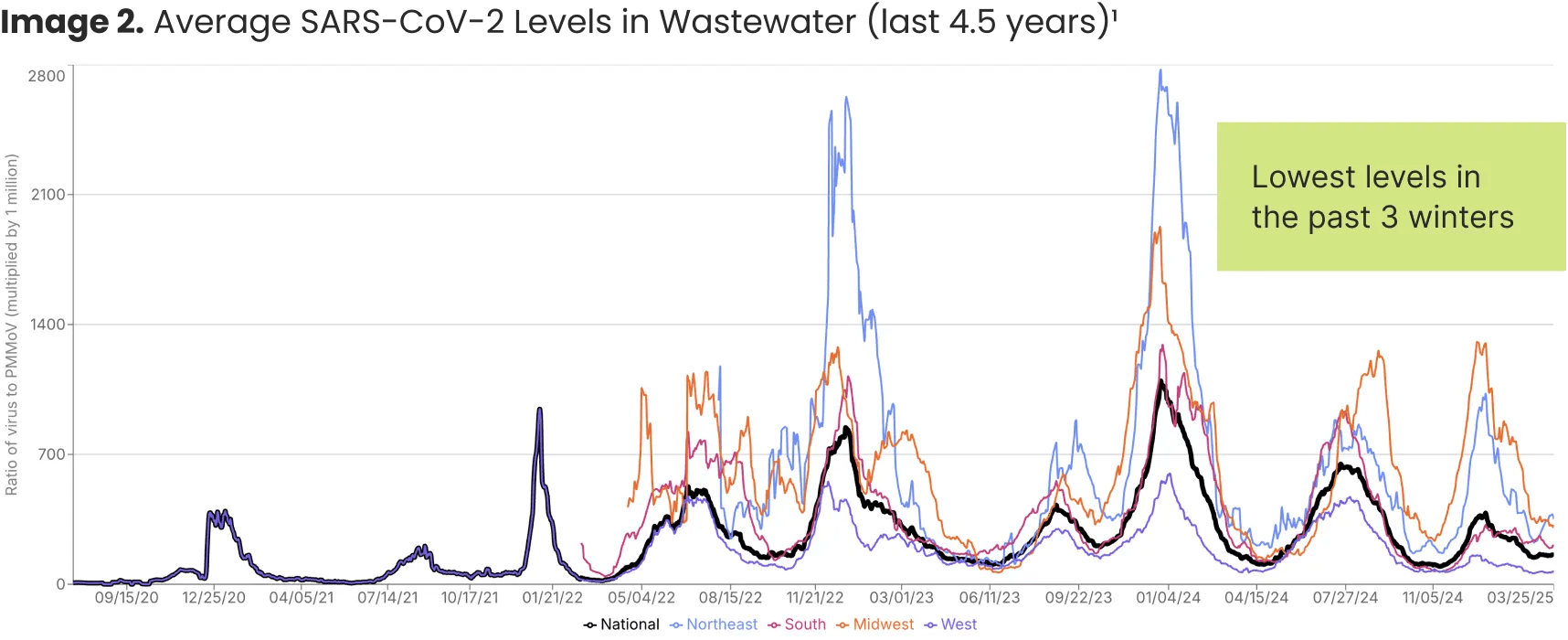
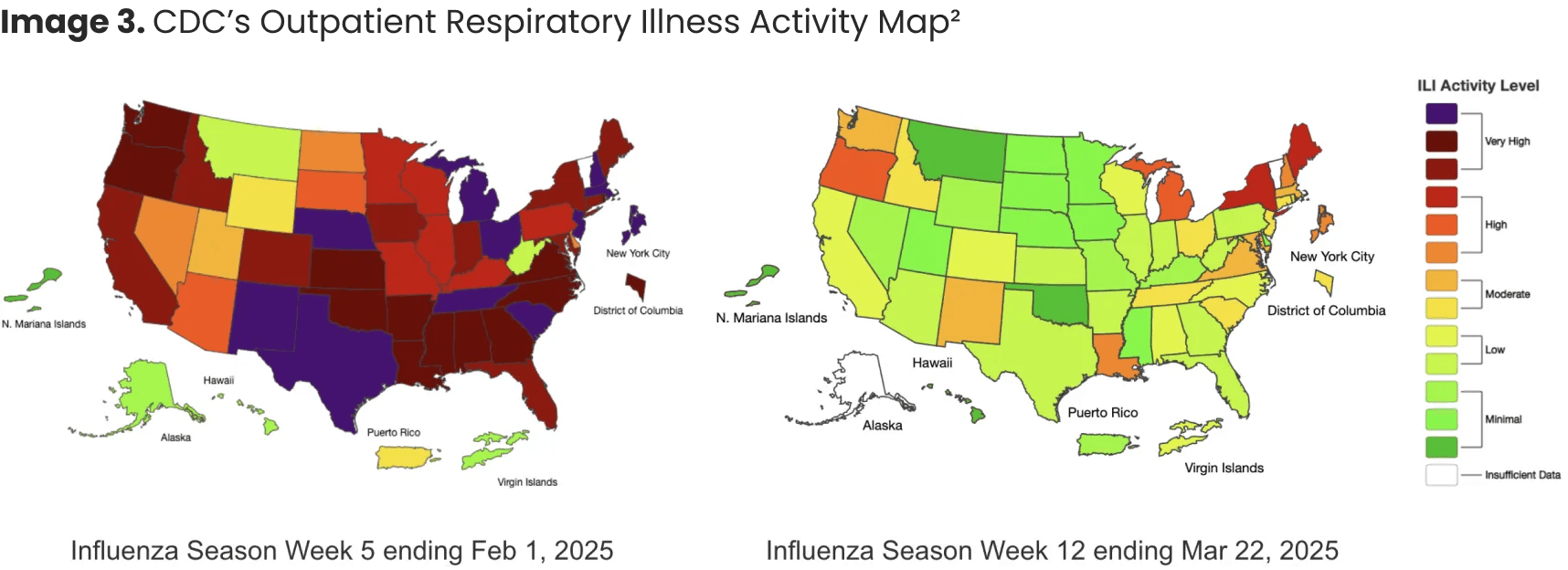
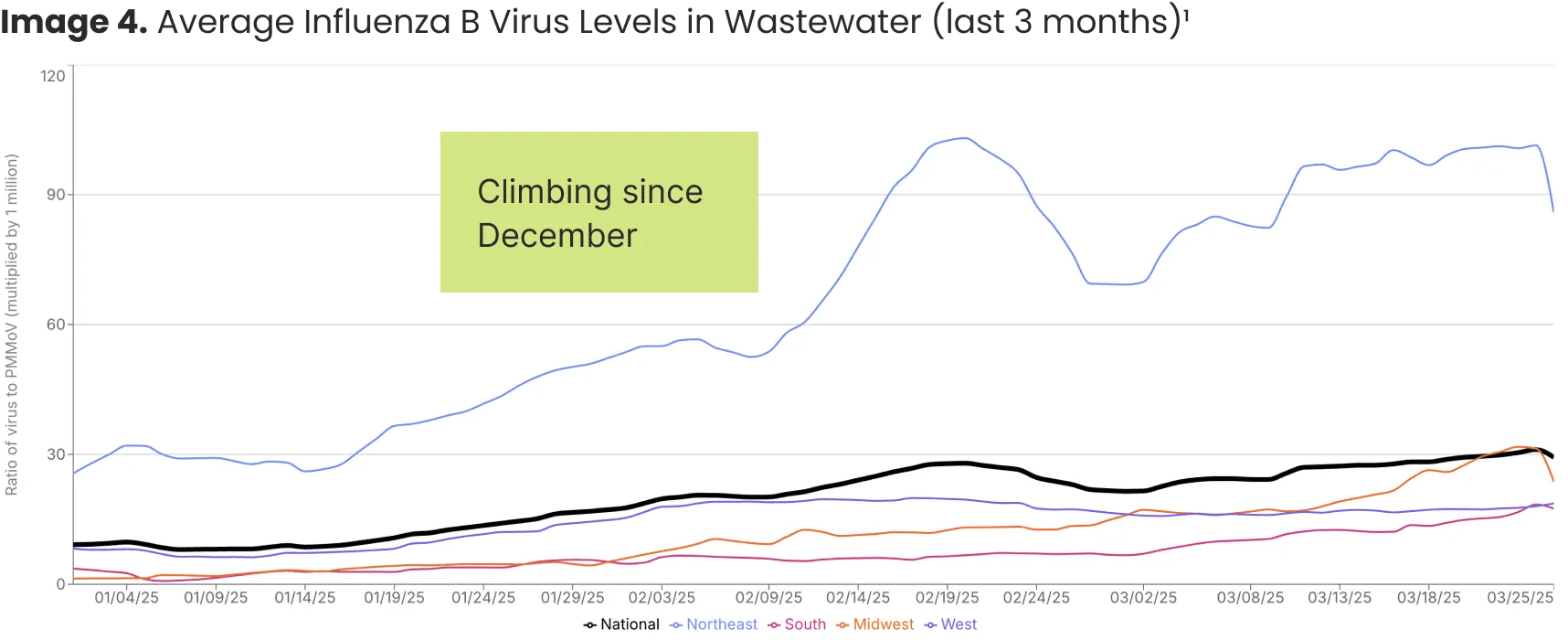
2. Prevalence of norovirus remains high
This winter has also been a historically bad season for norovirus, a highly contagious virus that causes gastroenteritis, commonly known as the stomach flu. Norovirus has remained at very high levels in wastewater since December, 1.5x as high as in the previous two years. These high levels persist, particularly in the colder states in the Northeast and Midwest, in addition to a recent uptick in the South. Norovirus is typically transmitted through contact with infected people or contaminated surfaces, or from consuming contaminated food or water. While it is typically resolved in just a few days, in order to protect yourself and your family, health departments remind us to be sure to wash hands often and thoroughly with soap and water.3
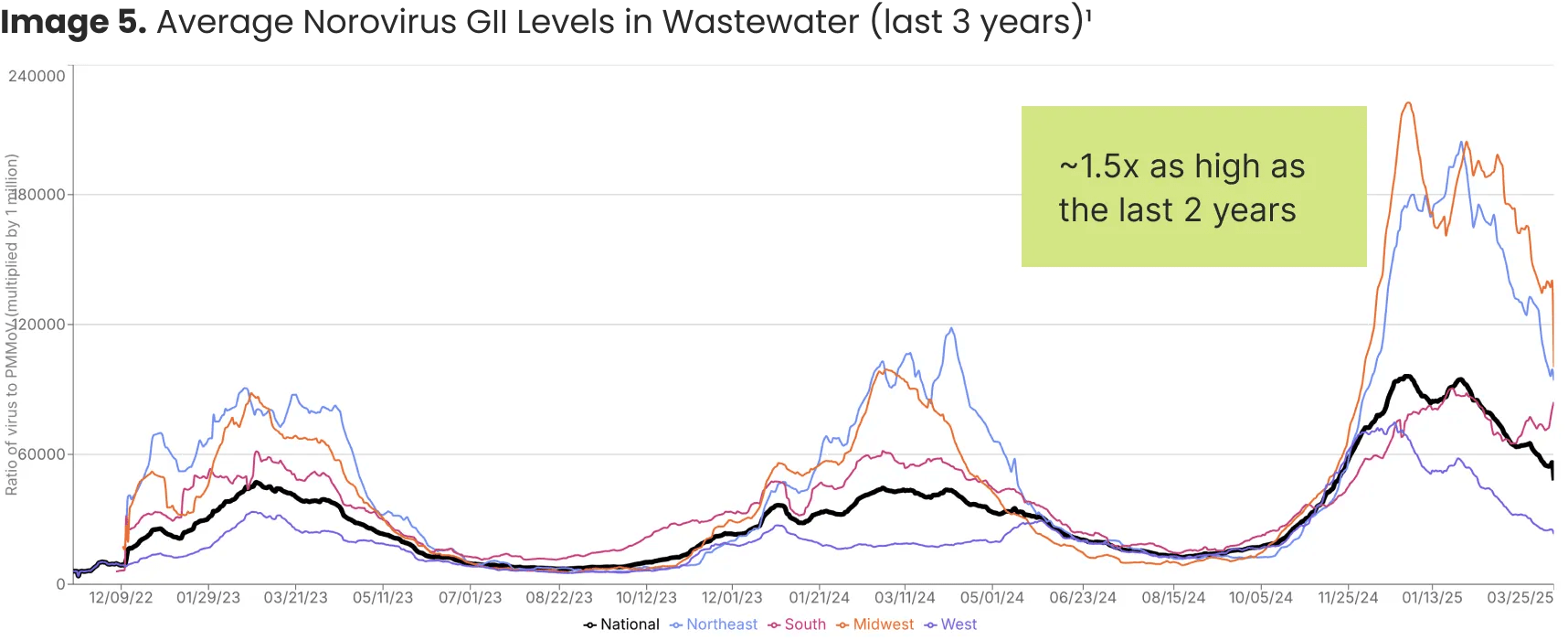
3. H5N1 still not a concern for humans, but agencies remain on alert
H5N1 (also referred to as a bird flu) is a subtype of the Influenza A virus. If you’re reading this, you’ve probably heard about bird flu in the news and how it is infecting poultry and dairy cows across the United States. While there have been several cases seen in the U.S., primarily among those who work on poultry and dairy farms, there has been no known person-to-person spread at this time. Therefore, unless you work with animals, the current public health risk is low.⁴ That said, health and agricultural departments around the country are watching the situation carefully and have relied on information from wastewater monitoring to provide early signals of where the virus has spread.
Our impact
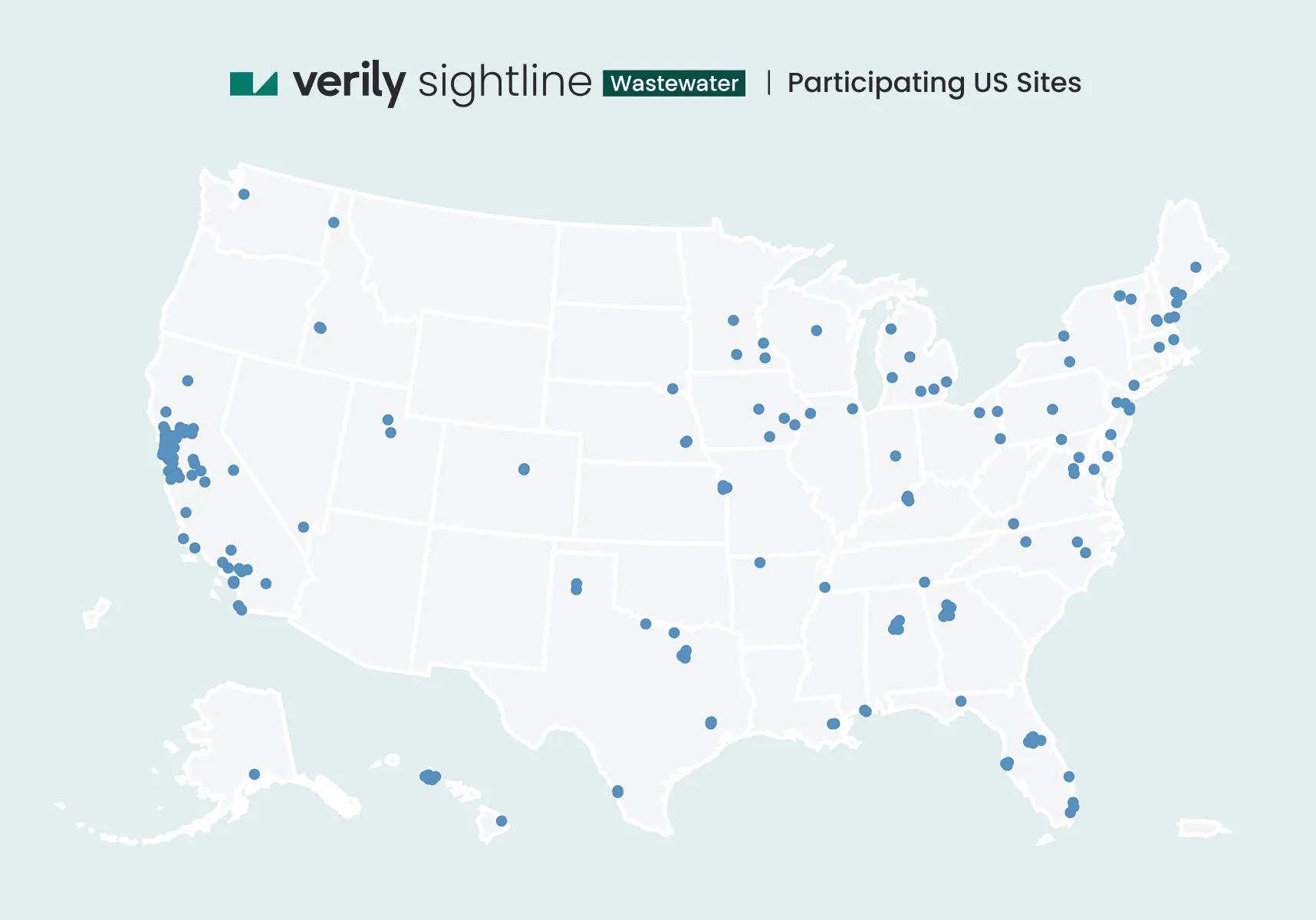
Verily’s wastewater monitoring program provides real-time public health insights and early warning of virus levels in communities, aiding preparation and response to public health issues. See participating sites and learn more at publichealth.verily.com
If you are interested in implementing wastewater monitoring in your community, please contact us here.
Pathogens available for wastewater monitoring:
Respiratory: SARS-CoV-2, RSV A & B, Influenza A (IAV), IAV subtypes (H1, H3, H5), Influenza B (IBV), Human metapneumovirus, Parainfluenza (1, 2, 3, 4A, 4B), Enterovirus D68, Measles.
Gastroenteric: Norovirus (GI, GII), Adenovirus 40/41, Rotavirus.
Other: Mpox virus (clade I, clade Ib, clade II), Non-variola orthopoxvirus, Candida auris, Hepatitis A, Dengue virus (1, 2, 3, 4), Oropouche virus, West Nile virus.
References
- https://publichealth.verily.com
- https://www.cdc.gov/fluview/surveillance/usmap.html
- https://www.cdc.gov/norovirus/about/index.html
- https://www.cdc.gov/bird-flu/situation-summary/index.html
- https://data.wastewaterscan.org
Data shown above was last updated on: April 1, 2025
This blog shares recent analysis from wastewater and public health data. Please reach out if you have any questions (Press@verily.com).


